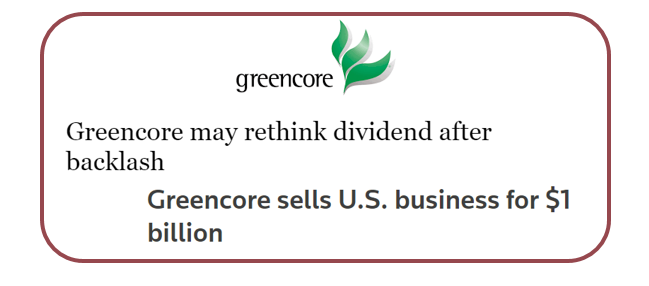Dividend Policy Decision – Greencore

In October 2018 Greencore Plc announced the sale of its entire US business for just over $1bn (£817m). This was in many ways a surprise as Greencore had only purchased the majority of this business in 2016 but it had struggled to gain train traction in the market since acquisition.
After fees, net proceeds came to £802m and £293m of this was used to reduce the debt in the group. The disposal then led to the issue of what to do with the surplus funds (£509m) – which is the dividend decision you would have covered in your finance studies. With not enough worthwhile investments to spend the money, Greencore had to decide what was the most effective way to return these funds to shareholders who own the funds. Greencore announced its intention to return the £509m in the form of a special dividend as a result of the sale. This led to a lot of complaints from various shareholders about the tax implications – dividends are taxed at income tax rates (up to 55%) rather than share buybacks which are taxed at capital gain tax rates (33%).

This opposition led to Greencore rethinking its distribution strategy and it came back out with a revised plan of a share buyback for the £509m via a tender offer. This now means shareholders have the option if they wish to participate or not (unlike the dividend) and they will incur CGT tax rates rather than the higher income tax rates.
This is a good example of the influences on the dividend decision for companies. Issues such as the difference in tax rates and what your shareholders want (often known as clientele effect) are key considerations when deciding on the most appropriate dividend policy.
Suggested Readings

no comments